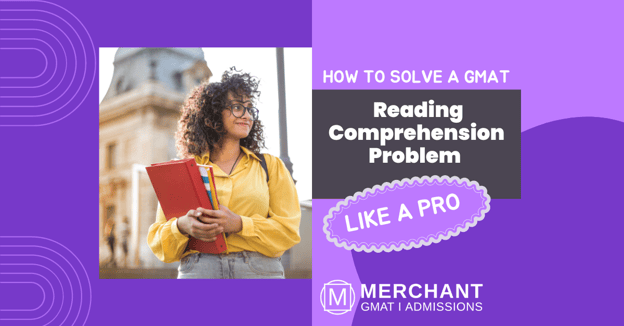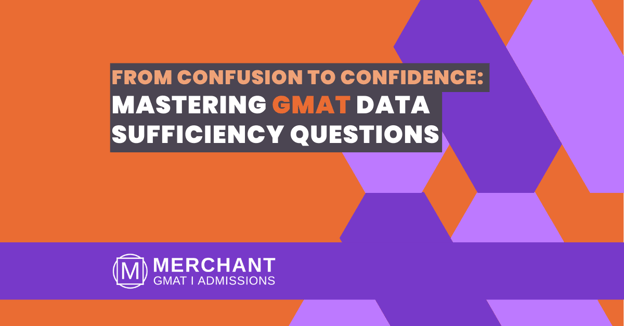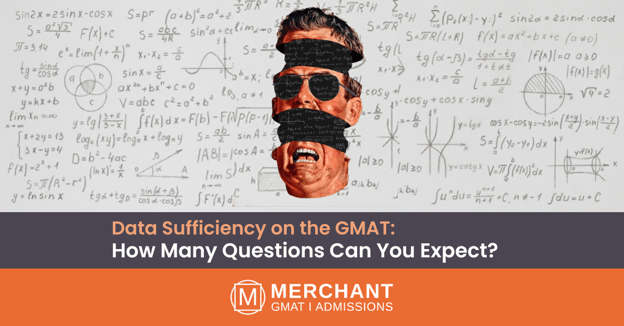A Deep Dive into Data Sufficiency: A Real-Life GMAT Example

When it comes to the GMAT, Data Sufficiency (DS) questions can be some of the most challenging. Not only do you have to know your math concepts, but you also have to be able to apply them in real-world scenarios. In this post, we'll take a deep dive into data sufficiency, using a real-life example to help illustrate the concept. With our guidance, you'll be ready to tackle even the toughest DS question on test day!
What is data sufficiency and why is it important for the GMAT test-takers to understand this concept well?
DS is an important skill to master for GMAT test-takers. To determine whether two pieces of information are enough to find an answer, critical reasoning and problem-solving capabilities must be combined. Test-takers need to recognize when the values and conditions in the question are relevant or irrelevant, as one wrong assumption can lead to a false conclusion. The ability to calculate accurately and come up with meaningful conclusions from the given data is key, as it will help them make the correct decision among their available alternatives. Understanding DS will give them the edge they need to take on any challenge that comes their way while taking the GMAT.
A real-life example of data sufficiency question from the GMAT exam
Problem:
|
If x+3 is a multiple of 5, what is the value of x? S1) x is a prime number S2) 10<2x<40 |
Suggest to take a moment to think about the problem
|
Solution: Given that x+3 is a multiple of 5, we can write a set of possible values for x: {2, 7, 12, 17, 22, 27, …} [Hay que decir que esto es información que tenemos de antemano sobre el valor de x] Now, let's consider the statements one by one: Statement 1: x is a prime number With the restriction given in statement 1 we could use 2 or 7 or 17 as answers. As we have more than one answer the information given is insufficient to determine the value of x. Statement 2: 10 < 2x < 40 Dividing both sides by 2, we get: 5 < x < 20 The possible values of x that satisfy this inequality are x = 7, 12, and 17. Again, as we have more than one answer the information given is insufficient to determine the value of x. Statement 1 and 2 together: We should look for values that are prime numbers and at the same time are in between 5 and 20. Again, as we have more than one answer (7 and 17) the information given is insufficient to determine the value of x. So the answer is E, statements (1) and (2) together are NOT sufficient. |
How to solve data sufficiency questions in the GMAT - step by step guide
Solving a DS question may seem daunting at first, but with the right tools and steps they are much easier to tackle. The first step is to read through the entire question and all of the given statements. Next, try to identify which mathematical concepts are used in each statement. After that, circle or write down what needs to be solved or determined: this usually matches up with the initial question posed in the problem. Then focus on how you make use of the given statements – consider their relationships, similarities, and differences – together and separately. Through this process, you can determine if any of them alone or combined can provide enough information to answer the initial question. Finally, choose your answer carefully and remember that oftentimes there is more than one correct solution.
Practice makes perfect - a few practice questions for you to try out!
When it comes to mastering concepts, practice makes perfect. What better way to apply this timeless adage than with a few DS questions? Using math concepts from problem solving, DS questions help evaluate if the available information is enough to answer the initial query. Give these practice questions a try to give yourself a comprehensive understanding of these all-important skills! Taking the time to really force yourself to think through various scenarios will soon become instinctive, leading you to master the essential processes of problem-solving in no time.
Below, you find some more exercises so that you can continue practicing:
|
What is the product of 5 consecutive integers? S1) There are positive and negative integers in the set S2) The sum of the least integer and greatest integer is negative |
|
Ax>By S1) A>B S2) x>y |
DS questions can seem intimidating and difficult, however, with some practice and thorough understanding of how to answer the question you can easily master this section of the GMAT. Understanding the concept of data sufficiency is key to success in answering these questions effectively. Being able to recognize what information is needed to answer a question correctly as well as being able to use that information in order to solve for the unknowns are critical skills for mastering DS questions. While you may not be an expert in one sitting, continuous practice and learning from your mistakes will help you ace this portion of the GMAT. Take your GMAT journey one step further with great guidance from Merchant GMAT & Admissions through their personalized coaching sessions for any level of test-taker!
Ready to Start?
Fill out the form, and a member of the Merchant Sales Team will be in contact with you shortly to discuss your MBA journey





